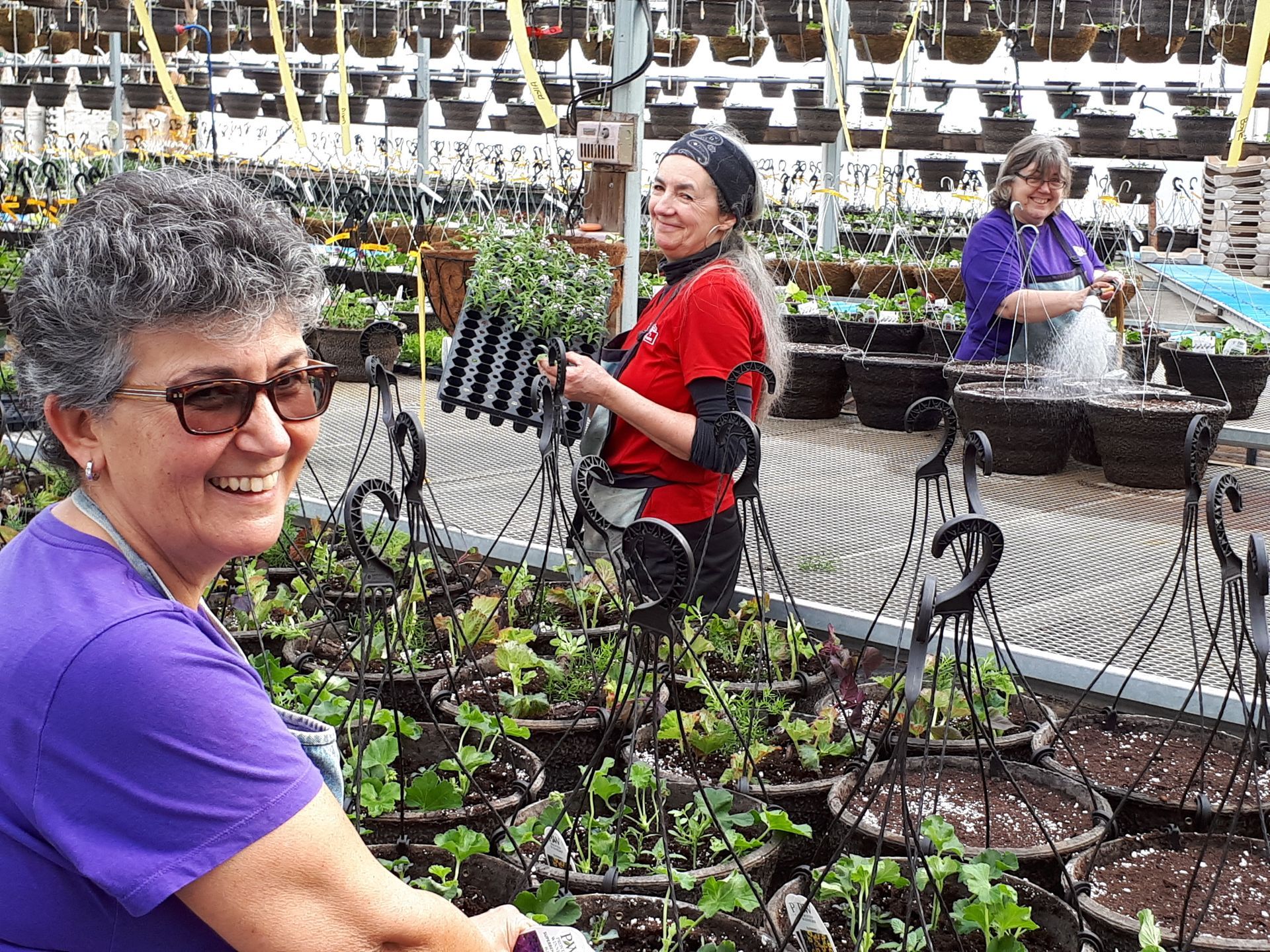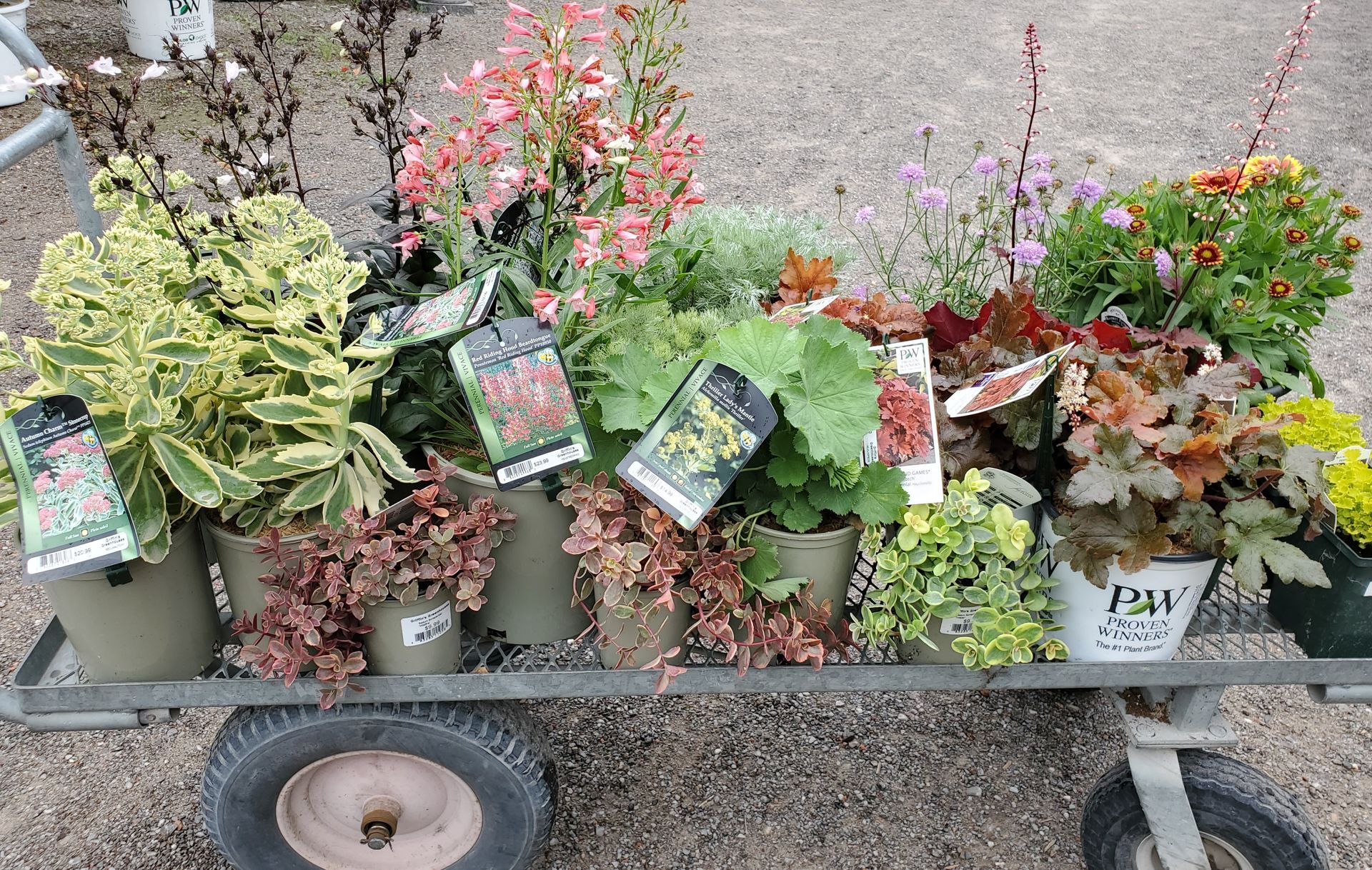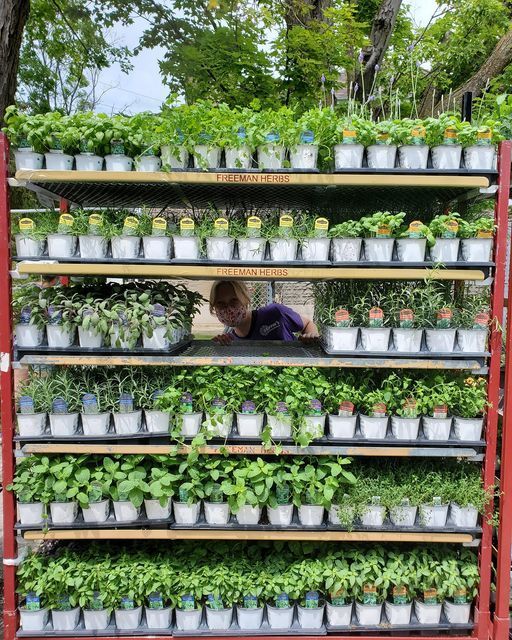Garden Guides

Hanging Basket, Patio Pot or Window Box care is not difficult, but it is specific. Your arrangement is “contained” so it requires you to provide water and food to nourish. Unlike plants in the ground which can send their roots deep in the earth looking for water, container plants need your diligence to keep them healthy, growing and blooming. Assess when your plant requires water; in most cases container arrangements in the sun will require daily watering. Shade arrangements may need water less frequently. Water thoroughly and deeply and until the container feels heavy and water drips from the drainage hole in the pot. If the plant is too dry, water will run out quickly. In this case the soil is stressed and shrunken form the side of the pot allowing the water to run out quickly. Water it then re-water again a short time later when the soil has relaxed and expanded. It should feel heavy with water weight. If using liquid or water soluble fertilizer, fertilizer is required at least every two weeks. If using slow release pellets, reapply mid-summer. Be sure to not fertilize when the soil is dry as the fertilizer may burn the roots. Dampen first with clear water, then use fertilized water. Environmental factors providing intense extremes like frosty nights, cool, whipping winds or relentless heat can damage your arrangement. Be aware of weather conditions and set down out of wind or sun or inside overnight if needed to protect. Most outdoor container arrangements cannot, however, live in your home permanently in the summer. They require the sun and outdoor environment to properly thrive. Some, like ferns, may be happy in a screened-in porch as long as there is ample light and air flow. Seek professional advice if you wish to carry over specific outdoor arrangement indoors for the winter.

A popular planting design is a foundation of perennials and flowering shrubs mixed together in pleasing ways. These larger perennials and shrubs create “anchors” in these gardens which draw the eye in and provide structure. Usually, the anchors are planted in odd numbers (for example, three hosta or two tall cedars and three hydrangeas). Amid these anchor plants are empty spaces where you can add Summer COLOUR! A well constructed flower bed has a combination of annuals and perennials/shrubs. While your anchor plants are usually the perennials (plants that come back year after year), adding annuals (live and bloom for one season) amongst them provides full season colour and interest. A rainbow of colours and textures might be your choice while others may choose one variety/colour in repetition. It’s your design choice. What annuals do well amid perennials? The best choices are ones that are robust and visible from a distance. Usually, these flower beds are seen from the street or at the end of the garden while sitting on the patio. Small, delicate plants can get lost or look like a jumble from a distance. Our favourites for filling in flower beds include: Sunpatiens: able to handle six+ hours or sun, these beautiful annuals stand over 12” tall and are in constant bloom. The white and tropical pink varieties have variegated leaves which stand out Zinnias: tall or short varieties, these repeat bloomers are stunning and require no deadheading Victoria Blue Salvia: about 14-16” tall, these dreamy blue flower spikes are multiple on each plant Marigolds: back in fashion, planting in groupings of 2-3 plants provides a dramatic clump, not little soldiers marching through the garden Impatiens: for shady beds, nothing beats old fashioned impatiens, planted in groupings, to be seen at a distance Many of these plants are grown and sold in cell packs and can be added, in large clumps, very affordably. The continuous bloom of these annuals will POP your flower beds all Summer – and now you’re gardening like a pro!

Planting an herb garden is fun and rewarding. Who doesn’t love the tender shoots of fresh basil or the fragrance of mint after it has been muddled on the bottom of a highball glass, ready for the addition of white rum and a squeeze of lime? Delicious and true Summer fare! A good herb garden is planted in a very sunny location and close to the patio action. If the herbs are too far away, they tend to be forgotten or not used regularly. Consider planting several in a large planter with good drainage (as all herbs like soil to dry between waterings), that can be close to the outdoor dining area or kitchen. The only herb that doesn’t like to “buddy up” with others is basil; it likes to be planted alone in a pot or in the garden. As each herb sizes up and can be harvested be sure to use ‘em or you’ll lose ‘em. A trim of not more than 1/3 the size of each plant, using sharp garden shears, will produce kitchen bounty and also encourage more growth. Herbs that are not harvested regularly will go to seed/ flower and stop producing fresh, succulent growth. Trim selectively, not taking a full section of any one plant. For short term use, herbs can be kept fresh in a glass of water on the kitchen counter or in the refrigerator; for use in future days, it is best to store them wrapped loosely in a damp paper towel and kept in a reusable bag in the frig. Dig through your recipes or watch endless videos of ways to use fresh herbs. Favourites include basil in caprese salad or in a robust pesto sauce, mint in mojitos, rosemary mixed in with olive oil, sea salt and garlic on potatoes and cilantro in a fresh salsa – Yum!
